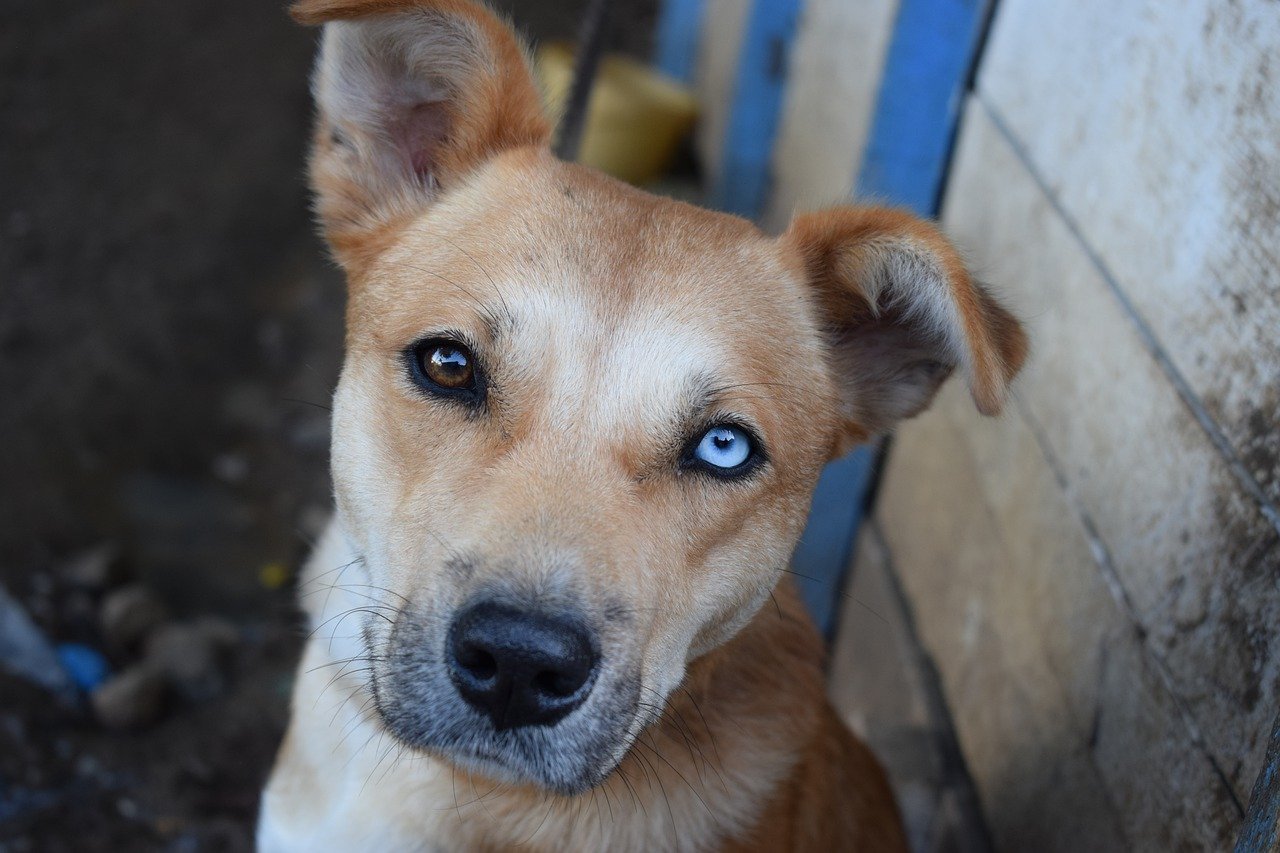What Are the Essential Considerations for Adopting a Blind Dog?

Adopting a pet is a remarkable journey that brings a great deal of fulfillment and happiness. Still, adoption requires thoughtful planning, especially when it comes to adopting a special-needs pet like a blind dog. Though their vision is impaired, these dogs are full of life and love. With the right training and care, they can lead healthy and fulfilling lives. Let’s explore some essential considerations you should keep in mind while adopting a blind dog.
Understanding the Special Needs of a Blind Dog
When adopting a blind dog, it’s essential to understand their special needs. This understanding will help you provide the right environment for your new pet.
Also to discover : How to Establish a Safe Play Area for Ferrets in Your Home?
Blind dogs perceive and interact with their environment differently due to their lack of vision. For instance, your dog will rely more heavily on its other senses, such as hearing and smell, to navigate around. This means you’ll need to put more efforts in keeping the house layout consistent. Regularly rearranging furniture can confuse your dog and lead to accidents.
Blind dogs also require a different approach to training. Typically sighted dogs learn commands and behaviors visually. Since blind dogs rely on auditory cues, training methods will involve more verbal commands and touch signals. Patience and consistency are key here; you will spend time repeating commands until your pet associates them with the intended action.
Also to discover : Tips for harmonious cohabitation between pets
Another crucial factor is your dog’s mental health. Blind dogs can sometimes feel more anxious or scared, especially in new environments. It’s your job to provide a safe and comforting environment that helps reduce their anxiety. A consistent routine, familiar sounds, and comforting scents can greatly help in this area.
Choosing the Right Food and Health Care for Your Blind Dog
Nutrition and health care play a vital role in the life of any pet. When it comes to blind dogs, certain considerations can enhance their quality of life.
Blind dogs, like all dogs, require a balanced diet to stay healthy. However, you might want to pay special attention to foods that support eye health. Even though your dog may not regain sight, foods rich in antioxidants like beta carotene and lutein can improve overall eye health. Consult with a vet to find the best diet plan for your blind dog.
Regular health check-ups are crucial for a blind dog. Certain health issues, such as diabetes, can affect your dog’s remaining senses. Regular vet visits will help ensure early detection of any health problems and their timely treatment.
Training a Blind Dog: What Works?
Training any dog takes time and patience, and training blind dogs is no different. You’ll have to adapt your methods to cater to their needs.
Rather than visual cues, blind dogs rely on auditory and tactile cues for training. You can use a variety of sounds to guide your dog, like clapping, clicking, or using a specific tone of voice. You could also use touch to guide them, but remember to always be gentle.
Scent can be a powerful tool. You can use scented oils or sprays to mark safe routes, obstacles, or specific rooms in your house. For example, you can use a certain smell to mark the doorway to the garden, allowing your dog to find the way independently.
Remember that consistency is crucial. Keep the commands consistent and use them in the same situations. Once your dog understands a command, don’t change it. This consistency will help your blind dog navigate life more comfortably.
Life with a Blind Dog: The Reality
Adopting a blind dog can be a rewarding experience, but it does come with challenges. It’s important to have realistic expectations about what life with a blind dog entails.
Blind dogs can live a normal, healthy life just like any other dogs. They can play, form bonds and even learn new tricks. However, they require a more stable and controlled environment. You’ll need to be more cautious about not leaving hazards around, like sharp objects or open staircases.
You’ll also need to invest more time in your pet’s training. The process might be a little longer and require more patience, but the results are well worth it. Remember, your blind dog is learning to trust you implicitly to navigate the world.
Despite these challenges, life with a blind dog can be incredibly fulfilling. These dogs often develop a deep bond with their owners. Their ability to adapt and overcome challenges is truly inspiring and serves as a reminder of the resilience of life.
Making the Decision: Is Adopting a Blind Dog Right for You?
Deciding to adopt a blind dog is a significant commitment. It’s essential to consider all aspects before making the decision.
Adopting a blind dog requires time, patience, and resources. You’ll need to be willing to adapt your home and lifestyle to meet the needs of your new pet. Ask yourself if you’re prepared to invest the time necessary for training and if your living situation is suitable for a blind dog.
Consider also the financial aspect. Blind dogs may require more frequent vet visits or specialized care, which can add up.
Lastly, remember that adopting any pet is a long-term commitment. Are you ready to provide care and love for the rest of the dog’s life?
Despite these considerations, the rewards of adopting a blind dog are immense. You’re giving a loving home to a dog that may have been overlooked because of its disability. The bond you’ll form with your blind dog will be a unique and enriching experience that you’ll cherish for life.
The Importance of Socialization and Exercise for a Blind Dog
Socialization and exercise are vital for a blind dog’s overall well-being. A well-thought-out plan can help your dog stay active and engaged.
Blind dogs, like their sighted counterparts, need regular exercise to stay healthy. The key difference is that you’ll need to take extra precautions to keep your blind pet safe. A fenced yard or a leash while walking will go a long way in preventing your dog from running into obstacles.
In case of exercise, activities that engage your dog’s other senses, such as fetch with a scented toy or a game of hide and seek with treats, can be a fun way to keep them active. Remember to always supervise your dog during playtime to prevent any accidents.
Just like exercise, socialization is crucial for a blind dog. Regular interaction with other dogs and people will help your blind pet to develop social skills and reduce anxiety. It’s important to introduce new people and pets slowly and in a controlled environment. Always ensure that other dogs are friendly and will not startle your blind dog.
Furthermore, remember that your deaf blind pet may react differently to certain situations than a sighted pet would. It’s important to be patient and give your dog the space and time they need to feel comfortable.
Buttons, Bells and Whistles: Using Assistive Tools for Your Blind Dog
To further enhance a blind dog’s quality of life, you can use assistive tools. These tools can make navigation and communication easier and more efficient.
Assistive devices, such as harnesses with handle, blind dog bumper collars, and protective eye-wear like doggles, can be life-changers. These tools will help your blind dog move around more confidently and safely.
There are also various toys available that are designed specifically for blind dogs. These toys often incorporate different textures and noises to engage your dog’s other senses. Also, consider using dog training clickers for communication. These can be used to create audible cues that your dog can associate with specific commands or actions.
Moreover, simple household items can be used to help your dog navigate. Doorbells or bells hung at dog level can alert your dog to doorways or stairs. Scent markers can also be used to create a recognizable path for your dog around the house.
Conclusion: The Fulfillment of Caring for a Blind Dog
While adopting a blind dog requires additional considerations and modifications, the rewards of providing a loving home for these dogs are beyond measure.
As an adopter, you have the opportunity to give a blind dog a second chance at life. It’s a decision that requires commitment, a career change in some ways, but the joy and enrichment it brings to your life are incomparable.
Your relationship with a blind dog will be based on trust, patience, and mutual understanding. The bond you form is often stronger, given your dog’s dependence on you for guidance.
Despite their vision loss, these dogs are capable of leading full, happy lives. They show us the importance of resilience, adaptability, and determination.
In conclusion, whether you’re considering adopting a dog who’s blind or already have a blind pet, remember that with the right care, love, and patience, these dogs can have a fulfilling and happy life. And the love and companionship they give back is a true testament to their spirit. They may have lost their sight, but certainly not their capacity to love and be loved in return.
